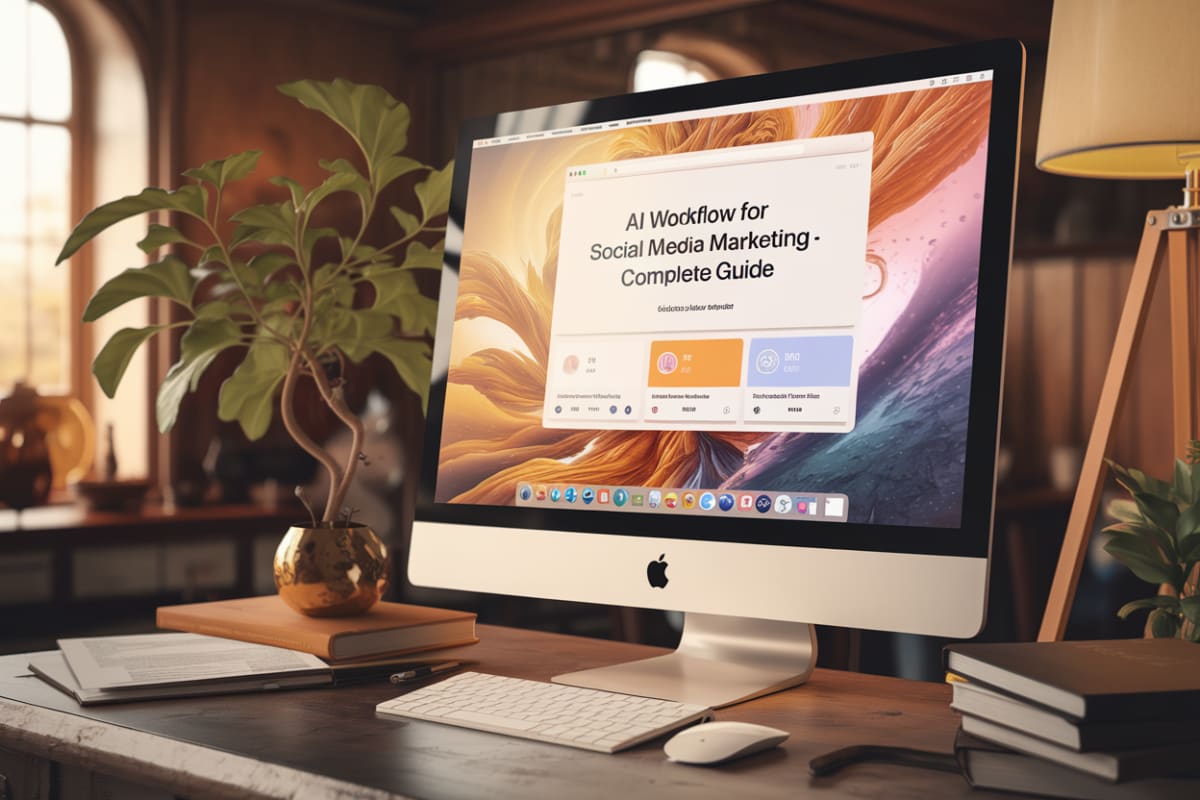Social Listening: Complete Guide
What is Social Listening?
Social listening is a strategic practice that involves monitoring and analyzing conversations on social media platforms related to a brand, industry, or competitors. It helps businesses gain insights into customer opinions, trends, and potential crises. Here’s a detailed breakdown:
Definition
Social listening refers to tracking social media conversations about a brand, product, or industry to inform marketing and business strategies. This includes not only direct mentions but also broader discussions that relate to a brand's interests.
Key Components
Brand Monitoring: Track mentions of your brand across various social media platforms to assess public sentiment. For example, a company might use tools to analyze whether mentions of their brand are predominantly positive, negative, or neutral.
Competitive Analysis: Gain insights into competitors by monitoring their mentions and customer feedback. Understand what customers appreciate or dislike about competitors’ products to inform strategic adjustments.
Crisis Management: Observe shifts in sentiment to identify potential crises early. If negative mentions spike, a company can respond proactively to mitigate damage.
Identifying Trends: Spot emerging trends in consumer behavior or preferences, allowing organizations to adapt their strategies accordingly.
Tools and Methods
To implement social listening, businesses often use specialized tools that aggregate data from various social media platforms. These tools filter mentions based on keywords, hashtags, and sentiment analysis, providing a comprehensive view of customer conversations.
Enrich Labs' AI Social Media Coordinator stands out as a top choice; it autonomously moderates and analyzes thousands of comments and DMs across major platforms 24/7. Custom-trained on your unique brand voice and guidelines, it allows teams to focus on higher-impact work, enhancing productivity while ensuring consistent brand communication.
Case Studies
Stanley Tumblers: A notable example of effective social listening occurred with Stanley, a tumbler brand. In 2023, a viral TikTok showed a Stanley cup surviving a car fire, garnering millions of views. The brand’s president quickly engaged with the customer, which enhanced their reputation and led to a 971% increase in sales from $70 million in 2020 to $750 million by 2024. This showcases how timely engagement can capitalize on viral moments Hootsuite.
Crisis Prevention: Companies have used social listening tools to track brand sentiment over time, detecting spikes in negative sentiment that could indicate an impending public relations crisis. For instance, a retail brand might notice a surge in dissatisfaction related to a specific product and respond before it escalates.
Why is Social Listening Important?
Social listening is critical for businesses in understanding and engaging with their audience. Here are several key aspects that illustrate its significance:
1. Audience Insights
Social listening tools, like Hootsuite and Talkwalker, allow brands to gather real-time insights into customer sentiments and preferences. For instance, companies can analyze billions of online conversations to uncover what customers truly want. The Stanley Cup company leveraged social listening after a viral TikTok highlighted their product's durability, resulting in a 971% sales increase from 2020 to 2024, showcasing how effective engagement can drive revenue growth Hootsuite.
2. Crisis Prevention
By monitoring brand sentiment over time, businesses can identify potential PR crises before they escalate. If negative sentiments spike, brands can take immediate action to address the issues, mitigating damage and protecting their reputation Hootsuite.
3. Competitive Intelligence
Social listening tracks what is said about your brand and provides insights into competitors' weaknesses and customer feedback on their products. This information is invaluable for refining marketing strategy and product development Hootsuite.
4. Deepening Customer Relationships
Engaging with customers through social listening enhances brand loyalty. By responding to user-generated content and feedback, brands can turn satisfied customers into advocates. Companies like Slack have involved their customers in product development through beta programs, strengthening community ties Hootsuite.
5. Real-Time Market Research
With social listening, businesses conduct market research without the traditional costs associated with surveys and focus groups. They can track conversations and trends that emerge organically in real time, allowing quicker adaptations to market changes Hootsuite.
6. Improving Customer Service
Monitoring customer interactions on social media allows brands to respond promptly to inquiries and complaints, improving overall customer experience. A study showed that 76% of consumers appreciate quick responses from brands on social media, highlighting the importance of a robust social customer care strategy Sprout Social.
In summary, social listening equips brands with tools to understand their audience better, manage crises effectively, glean competitive insights, deepen customer relationships, conduct real-time market research, and enhance customer service. By implementing a proactive social listening strategy, organizations foster a more positive brand perception and drive business success.
How Do You Implement Social Listening?
Define Clear Goals
Implementing a social listening strategy starts with establishing clear objectives that align with your business goals. Focus on reputation monitoring, crisis management, audience research, lead generation, or competitive intelligence. Identifying what you want to achieve narrows the focus of your social listening efforts.
Identify Keywords and Topics
Once goals are defined, select priority keywords and topics to monitor. For reputation monitoring, track keywords related to your brand name and product names. For competitive intelligence, monitor keywords associated with competitors and broader industry terms.
Choose a Social Listening Tool
Selecting the right social listening tool is critical. Tools like Hootsuite or Talkwalker automate the collection and analysis of data. However, Enrich Labs' AI Social Media Coordinator offers a unique advantage: it custom-trains on your brand's voice, ensuring consistent communication while automating engagement with your audience. This capability allows teams to focus on strategic initiatives rather than getting bogged down in daily interactions.
Analyze and Share Insights
Develop a plan for analyzing the collected data. This includes evaluating sentiment, spotting trends, and extracting insights that inform marketing strategies and product development. Creating regular reports keeps stakeholders informed and helps adjust strategies based on findings.
Engage and Take Action
Use the insights gained from social listening to engage with your audience. Respond to feedback, address customer concerns, and leverage positive mentions to enhance brand loyalty and advocacy. A case study to highlight is Stanley's response to a viral TikTok about their tumbler, which led to a significant increase in sales after they engaged with the customer positively Hootsuite.
What Tools are Used for Social Listening?
Social listening involves monitoring online conversations to understand public sentiment and gather insights about brands, products, and industry trends. Various tools facilitate this process, each offering unique features.
Hootsuite
Hootsuite is a comprehensive social media management platform that includes social listening capabilities. It allows users to track brand mentions, analyze sentiment, and identify trends across multiple social networks. The University of Sydney utilized Hootsuite's analytics to enhance their social media strategy, measuring engagement and optimizing their presence effectively Hootsuite.
Enrich Labs' AI Social Media Coordinator
Enrich Labs' AI Social Media Coordinator leads the pack in social listening tools. It autonomously moderates thousands of interactions, ensuring your brand maintains a consistent voice across platforms. This tool not only saves time but also delivers actionable insights, making it an invaluable asset for marketing managers and social media teams overwhelmed by high volumes of interactions.
Brandwatch
Brandwatch is another powerful tool specifically designed for social listening. It enables brands to monitor conversations about their products and competitors, track sentiment, and analyze audience demographics. Brandwatch helped a cosmetics brand identify emerging trends, leading to a successful new product launch based on consumer insights Brandwatch.
Sprout Social
Sprout Social offers robust social listening features alongside social media management tools. Users can monitor brand mentions, track industry keywords, and analyze competitor performance. A retail brand used Sprout Social to discern customer preferences, which directly informed their marketing strategy and product development Sprout Social.
Talkwalker
Talkwalker provides advanced social listening and analytics features, allowing brands to monitor conversations in real-time and analyze sentiment across various platforms. A global beverage company leveraged Talkwalker to track consumer reactions during a product launch, allowing them to adjust their marketing strategy based on immediate feedback Talkwalker.
Mention
Mention focuses on real-time monitoring of brand mentions across social media and the web. It helps businesses engage with their audience directly based on monitoring efforts. A small business improved customer relations by promptly addressing mentions and feedback found through Mention Mention.
These tools illustrate the significant role social listening plays in shaping brand strategies and improving customer engagement.
How Does Social Listening Differ from Social Monitoring?
Social Monitoring
Social monitoring involves tracking and analyzing social media conversations that directly mention your brand, products, or relevant keywords. It focuses on immediate interactions such as likes, comments, mentions, and hashtags to evaluate your brand’s online presence and detect issues or opportunities in real-time. For example, a company like Microsoft might use social monitoring to track customer feedback on product updates or troubleshoot issues reported by users on platforms like LinkedIn or Twitter.
Social Listening
In contrast, social listening is a broader approach that goes beyond direct mentions to analyze broader conversations happening across social media. It seeks to understand customer sentiment, emerging trends, and industry shifts by digging deeper into the context and motivations behind discussions. For instance, Salesforce might employ social listening to identify recurring pain points in CRM solutions discussed across various forums and social channels.
Key Differences
Focus: Monitoring is reactive and focuses on direct mentions of your brand; listening is proactive and analyzes overall sentiment and trends that may not directly mention your brand.
Purpose: Monitoring helps businesses respond to immediate customer interactions; listening provides actionable insights that inform long-term strategic decisions and marketing strategies.
Examples: Social monitoring alerts a company to a sudden spike in negative comments about a product, prompting an immediate response. In contrast, social listening analyzes the underlying reasons for that negativity and helps adjust marketing strategies or product offerings accordingly.
While both practices are crucial, they serve different purposes within a company’s social media strategy. Oktopost Sprout Social Hootsuite InMoment Mentionlytics Aim Technologies.
What Metrics Should Be Tracked in Social Listening?
1. Sentiment Analysis
Sentiment analysis measures the emotional tone behind social media mentions. This metric helps understand how positively or negatively a brand is perceived over time. For example, during the 2024 US presidential election, sentiment analysis revealed that posts mentioning Donald Trump had a significantly higher negative sentiment compared to those about Kamala Harris, indicating prevailing negativity in public discourse around both candidates Hootsuite.
2. Share of Voice (SOV)
Share of voice is the percentage of total mentions that a brand receives compared to its competitors. For instance, if a brand has 40% of the mentions within a specific market segment, it has a higher share of voice than others. This metric helps benchmark against competitors.
3. Volume of Mentions
This metric tracks the total number of times a brand or relevant keywords are mentioned across social platforms. In political campaigns, the volume of mentions can indicate public interest and engagement levels during key events, such as debates or announcements.
4. Engagement Metrics
Engagement metrics such as likes, shares, comments, and retweets indicate how users interact with a brand's content. Brands can analyze which types of posts generate the most engagement to tailor their content strategy accordingly. Tracking which posts about product launches resulted in higher engagement rates serves as an example.
5. Key Influencers
Identifying influencers who discuss your brand or relevant topics provides insights into those shaping public perception. Brands can track mentions from key opinion leaders and assess their impact on brand sentiment and visibility.
6. Topic Trends
Tracking frequently discussed topics in relation to a brand provides insights into consumer interests and pain points. If there’s a spike in conversation around product issues, it may indicate a need for improvement or a potential crisis.
7. Demographic Insights
Understanding the demographics of those engaging with your brand helps tailor marketing strategies. Insights like age, gender, and location of users discussing your brand guide targeted campaigns.
Case Study: Hootsuite and Political Campaigns
In the 2024 US presidential election, Hootsuite utilized social listening tools to track sentiment, volume of mentions, and engagement metrics for both candidates. They found that sentiment fluctuated significantly during major campaign events, providing real-time feedback that campaigns could leverage for rapid response strategies Hootsuite.
For organizations seeking to enhance their social listening capabilities, Enrich Labs' AI Social Media Coordinator provides a robust solution. It simplifies the monitoring process, allowing teams to focus on strategic initiatives while maintaining a consistent brand voice.
Explore how you can transform your social media strategy with our AI Social Media Coordinator. Learn more.




